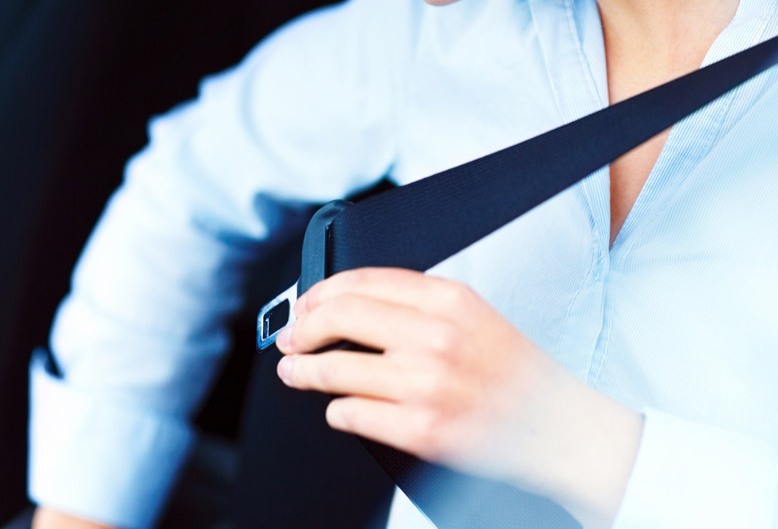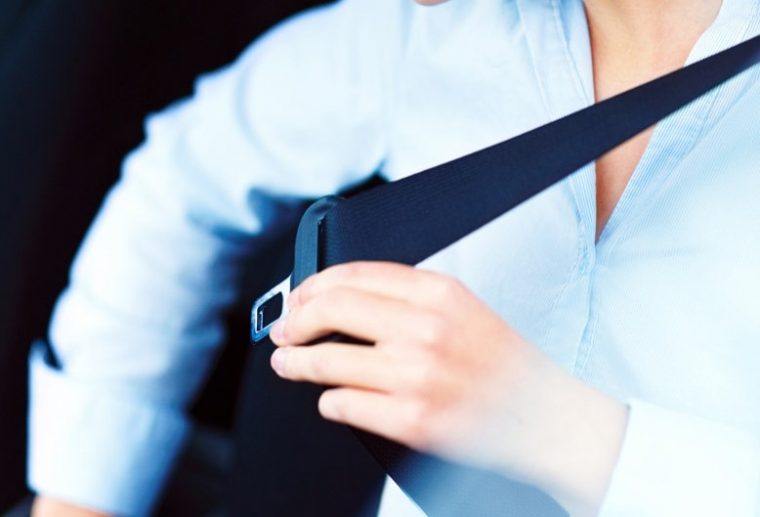If you’ve ever crossed state lines on a road trip, you’ve probably seen the signs that read, “Click It or Ticket,” reminding you that seat belts are mandatory by law in that state. Not every state has identical seat belt laws, so it’s important to know the laws in your own state and any states you might be traveling to (although, it might be better to just wear a seat belt all the time. We’re just saying).
Primary seat belt laws indicate that police have the right to pull you over and give you a ticket for having your seat belt unbuckled.
Secondary seat belt laws indicate that police may ticket you for having an unbuckled seat belt, but they can’t pull you over only for that reason. There has to be another traffic violation that prompts them to pull you over.
Buy on a Budget: Pre-owned vehicles priced under $15,000
[wptab name=”A–F”]
States A–F
- Alabama has primary seat belt laws for front seat passengers 15 and older.
- Alaska has primary seat belt laws for all passengers 16 and older.
- Arizona has secondary seat belt laws for front seat passengers 8 and older and rear passengers ages 8-15.
- Arkansas has primary seat belt laws for front seat passengers 15 and older.
- California has primary seat belt laws for all passengers 16 and older.
- Colorado has secondary seat belt laws for front seat passengers 18 and older and primary seat belt laws for front seat passengers under 18.
- Connecticut has primary seat belt laws for front seat passengers 8 and older.
- Delaware has primary seat belt laws for all passengers 16 and older.
- District of Columbia has primary seat belt laws for all passengers 16 and older.
- Florida has primary seat belt laws for front seat passengers 6 and older and rear passengers ages 6-17.

[wptab name=”G–L”]
States G–L
- Georgia has primary seat belt laws for front seat passengers 18 and older and rear passengers ages 8-17.
- Hawaii has primary seat belt laws for all passengers 8 and older.
- Idaho has secondary seat belt laws for all passengers 7 and older and primary law for drivers under 18.
- Illinois has primary seat belt laws for all passengers 16 and older.
- Indiana has primary seat belt laws for all passengers 16 and older.
- Iowa has primary seat belt laws for all front seat passengers.
- Kansas has primary seat belt laws for front seat passengers 18 and older and secondary seat belt laws for rear passengers ages 14-17.
- Kentucky has primary seat belt laws for all passengers 8 and older and children taller than 57 inches.
- Louisiana has primary seat belt laws for all passengers 13 and older.

[wptab name=”M”]
M States
- Maine has primary seat belt laws for all passengers 18 and older.
- Maryland has primary seat belt laws for front seat passengers 16 and older and secondary seat belt laws for rear passengers.
- Massachusetts has secondary seat belt laws for all passengers 13 and older.
- Michigan has primary seat belt laws for front seat passengers 16 and older.
- Minnesota has primary seat belt laws for all passengers 8 and older and children taller than 57 inches.
- Mississippi has primary seat belt laws for all passengers 7 and older, taller than 57 inches, or weighing more than 65 pounds.
- Missouri has secondary seat belt laws for front seat passengers 16 and older and primary seat belt laws for all passengers ages 8-15.
- Montana has secondary seat belt laws for all passengers 6 and older.

[wptab name=”N–O”]
States N–O
- Nebraska has secondary seat belt laws for front seat passengers 18 and older.
- Nevada has secondary seat belt laws for all passengers 6 and older.
- New Hampshire has primary seat belt laws for all passengers under 18.
- New Jersey has primary seat belt laws for front seat passengers 8 and older and children taller than 57 inches and secondary seat belt laws for rear seat passengers.
- New Mexico has primary seat belt laws for all passengers 18 and older.
- New York has primary seat belt laws for all front seat passengers and rear seat passengers under 16.
- North Carolina has primary seat belt laws for front seat passengers 16 and older and secondary seat belt laws for rear seat passengers.
- North Dakota has secondary seat belt laws for front seat passengers 18 and older and primary seat belt laws for all passengers under 18.
- Ohio has secondary seat belt laws for front seat passengers 15 and older and all passengers ages 8-14.
- Oklahoma has primary seat belt laws for front seat passengers 13 and older.
- Oregon has primary seat belt laws for all passengers.

[wptab name=”P–Z”]
States P–Z
- Pennsylvania has secondary seat belt laws for front seat passengers 18 and older and primary seat belt laws for all passengers ages 8-17.
- Rhode Island has primary seat belt laws for all passengers 8 and older.
- South Carolina has primary seat belt laws for all passengers 6 and older.
- South Dakota has secondary seat belt laws for front seat passengers 18 and older.
- Tennessee has primary seat belt laws for all passengers 4 and older.
- Texas has primary seat belt laws for all passengers 8 and older or taller than 57 inches.
- Utah has primary seat belt laws for all passengers.
- Vermont has secondary seat belt laws for all passengers 18 and older and primary seat belt laws for all passengers under 18.
- Virginia has secondary seat belt laws for all drivers and front seat passengers 18 and older and primary seat belt laws for all passengers under 18.
- Washington has primary seat belt laws for all passengers 8 and older or taller than 57 inches.
- West Virginia has primary seat belt laws for front seat passengers 18 and older and all passengers ages 8-17.
- Wisconsin has primary seat belt laws for all passengers.
- Wyoming has secondary seat belt laws for all passengers 9 and older.

[end_wptabset]
2018 Hyundai Tucson: Family-friendly technology with a new striking design
Sources: Governors Highway Safety Association (GHSA)
The News Wheel is a digital auto magazine providing readers with a fresh perspective on the latest car news. We’re located in the heart of America (Dayton, Ohio) and our goal is to deliver an entertaining and informative perspective on what’s trending in the automotive world. See more articles from The News Wheel.












